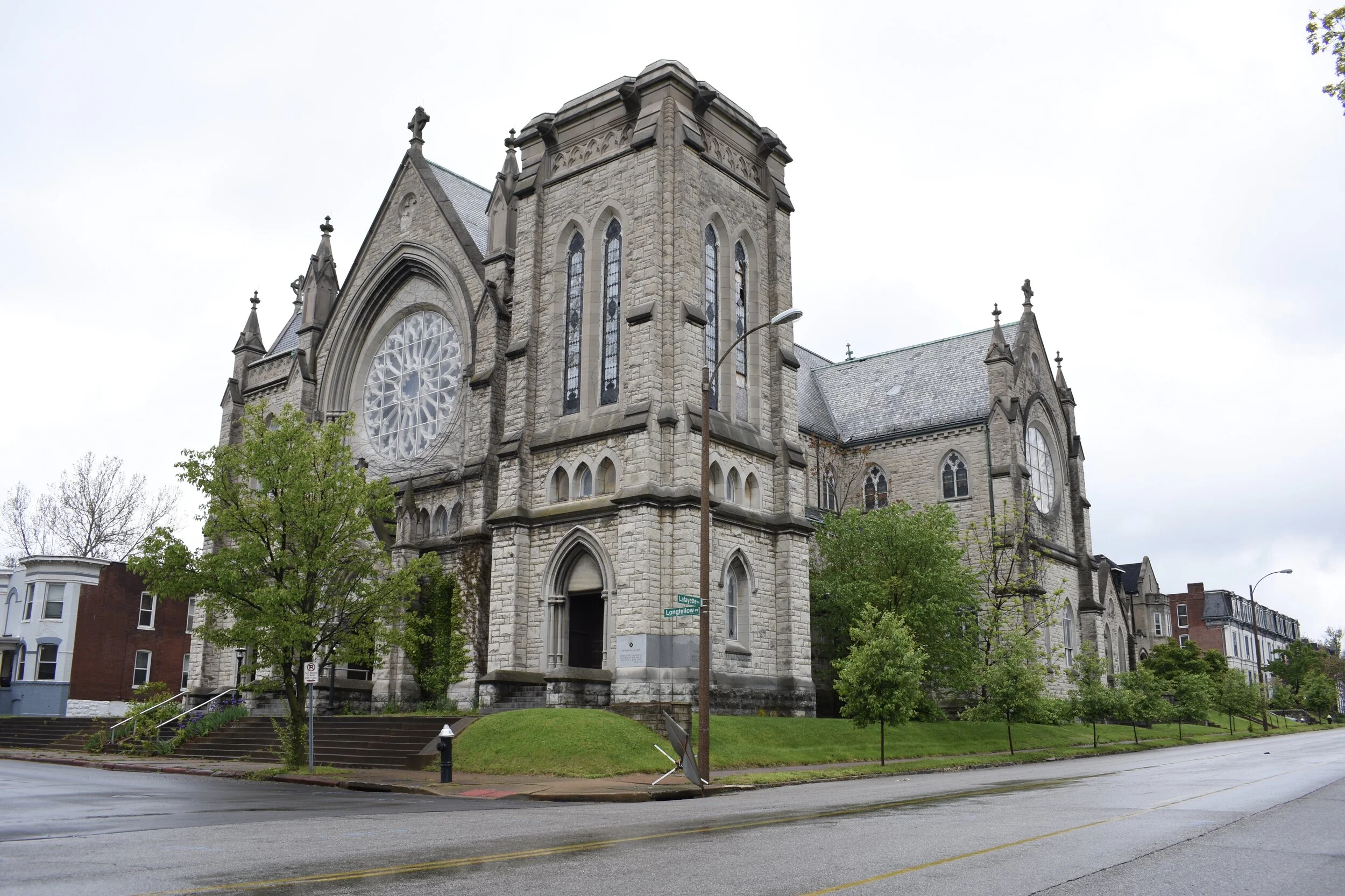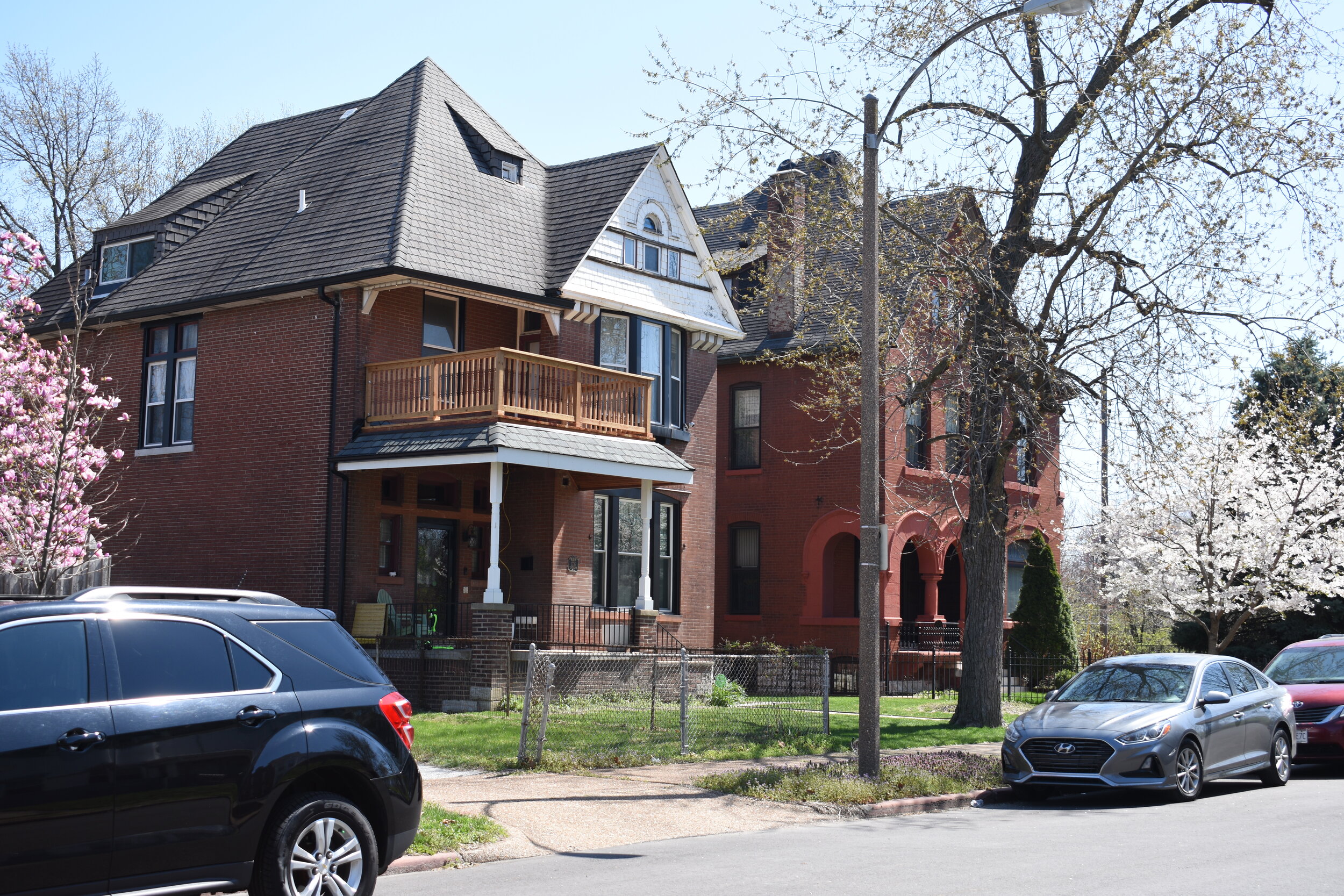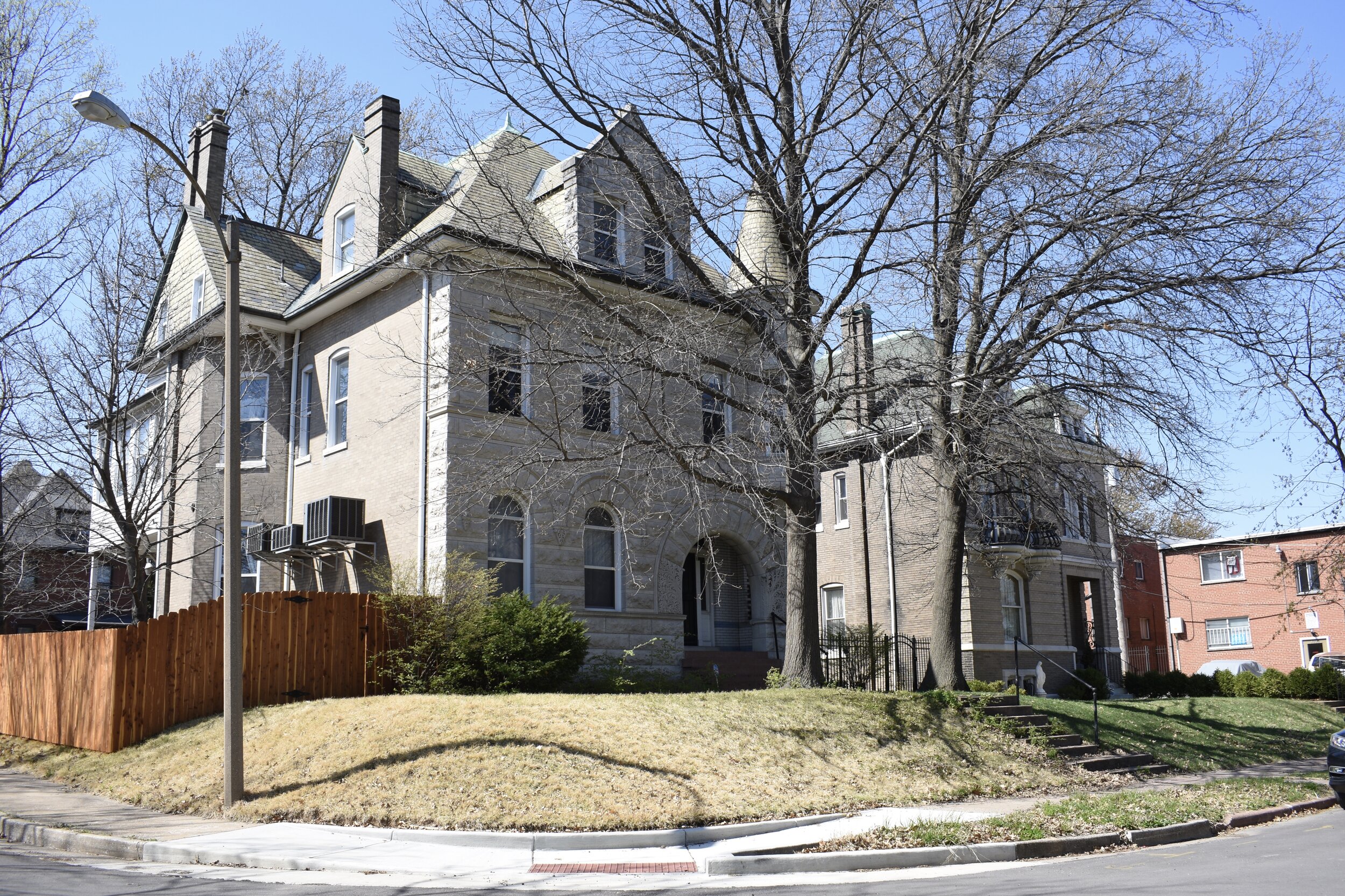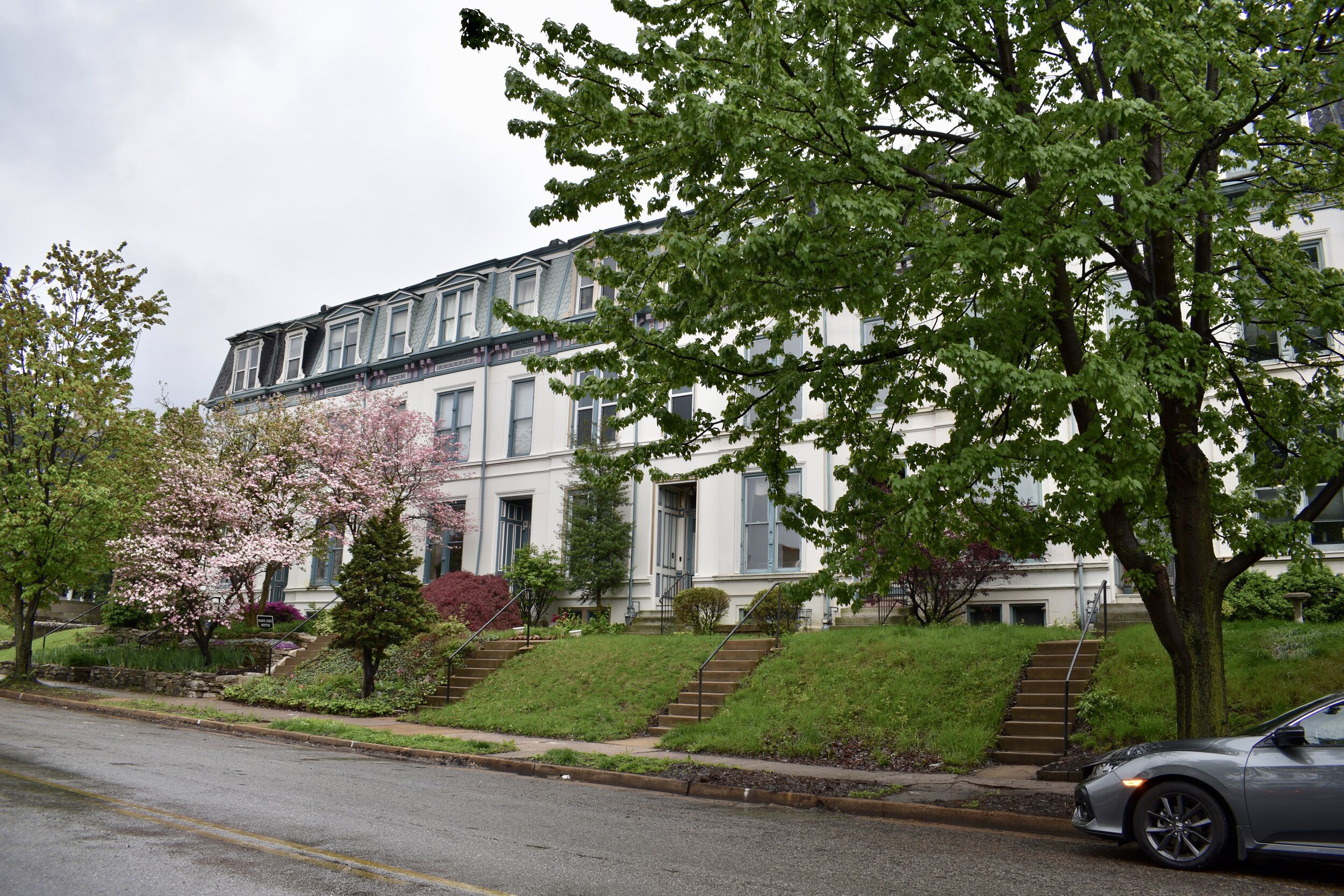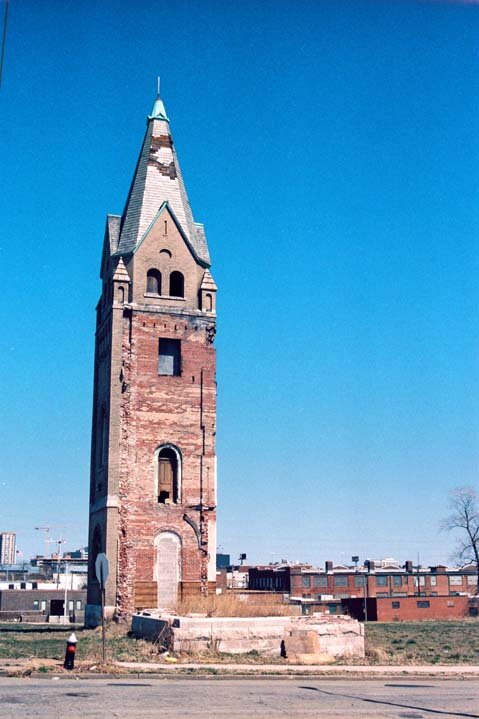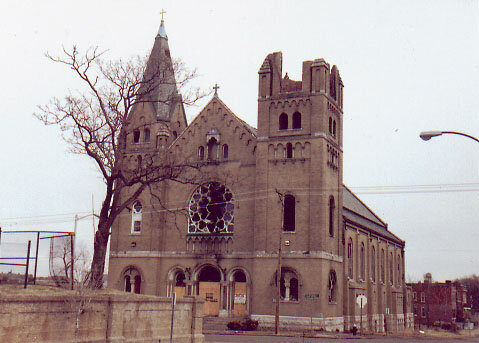I recently updated a profile of the Gate District neighborhood and kept thinking of how damaging I-44 was to St. Louis neighborhoods. You can see how the Gate District was isolated from the Compton Heights neighborhood immediately to the south.
You can sense the loss in the stretch of Lafayette Avenue from Nebraska to South Grand.
Per my assessment of historic aerial photos, no east-west streets were replaced by I-44 in this section of Lafayette Avenue. The north/south streets of Iowa, Longfellow, Michigan and Oregon were replaced by the Interstate, with close to 100 buildings lost.
Further, some of the housing in the area was lost in the cyclone of 1896; but, much was rebuilt…until the Interstate took them down again.
The buildings that survived along the southern side of Lafayette Avenue are quite impressive and reminders of what was lost to the Interstates in St. Louis.
There are some beautiful former Catholic buildings along Lafayette that survived as well.
The Catholic community was once strong throughout all of St. Louis.
“St. Louis played an important role in the history of the Roman Catholic Church in America. It was the nation's second archdiocese (preceded by Baltimore), established as such in 1847. By the end of the nineteenth century, St. Louis served a population of more than 200,000 Catholics.” (source)
But they didn’t stay, or faded away. The Catholic Arch Diocese abandoned so much under the pressures of white middle class flight to the suburbs. When the people left, the churches had to make tough decisions on closures.
Much was just left to rot. Works of art, abandoned and left to the elements and arsonists, in some cases. Since we’re talking about the Gate District, look no further than the former St. Henry’s Catholic parish that once occupied the area along California Avenue between Rutger and Hickory Streets.
Photo sources, left to right: Catholic Archdiocese Archives, Built St. Louis, Built St. Louis
St. Henry’s suffered two devastating fires and closed for good in 1977. The parish merged with Immaculate Conception just a couple blocks to the south (source).
Luckily, the awesome buildings from the former Immaculate Conception parish are still there after the church closed in 2005. Upon it’s closure, parishioners were transferred to St. Margaret of Scotland in the Shaw neighborhood. It remains strong to this day.
From the former Immaculate Conception parish, there remains a church, rectory and school. All three buildings are on the National Register of Historic Places. The buildings below may be in use by the Compton Heights Concert Band, but I couldn’t confirm it. Good news is the “lights were on” when I rolled by today for these shots.
Per the Missouri Department of Natural Resources, the original renderings of the church included a spire atop the bell tower, but it was never constructed.
The Gothic Revival church was completed in 1908 for ~$200,000. The Classical Revival rectory was completed in 1924.
The church was designed by Barnett, Haynes, and Bamett, who also designed the Jefferson Hotel, the (new) Cathedral Basilica, Temple Israel, Commonwealth Trust Building, St. Mark's on Page and Academy, St. Rose on Goodfellow and Etzel, Visitation on Easton and Taylor and the Missouri Athletic club.
The school building just east of the church was converted to apartments, a great re-use that brings residents, a retention of history and a contributing property to the tax rolls that fund our schools and city.
The 82,000 square foot property is now called the Lafayette Terrace Apartments, owned by a Chesterfield, MO entity.
Six carports were constructed in 1993.
The building sits atop a raised elevation and is quite striking from Lafayette Avenue.
Per the Missouri Department of Natural Resources, the Immaculate Conception School, also called Compton Heights Catholic School, was completed in 1926, right around the time of the rectory.
The building was designed by Henry Hess in the Jacobethan Revival style. Hess worked for William B. Ittner, among others. He went on to design over 700 buildings including Cardinal Glennon College, Rosati-Kain High School, De Andries High School, the William Cullen McBride High School, the College of Commerce and Finance for St. Louis University (now the Business School), and Christian Brothers College.
In its heyday, the school held 300-400 students mostly of German and Irish descent, run by the Sisters of Loretto. By the mid-1950s and into the ‘60s, the school welcomed Italian, Black and Puerto Rican students in the wake of a massive exodus of people from St. Louis for the suburbs.
By 1969, the St. Louis Arch Diocese consolidated the schools of St. Henry, Holy Guardian Angels, St. John Nepomuk, Sts. Peter and Paul and St. Vincent de Paul parishes into this single school building. At the time it had less than 100 students at the height of our residential free fall.
It was then the school was renamed to Compton Heights Catholic School, and the Sisters of Loretto were replaced by the Precious Blood Sisters becoming the Cession Heights School which was closed in 1979, and its students transferred to Notre Dame elementary school.
The school remained vacant for nearly six years and vandals broke out most of the windows. They did a good job of securing the entranceway and first floor windows, so interior damage was reported to be minimal from vandals, but the elements had taken their toll.
Photo credit: Randy Spurr from DNR application
A developer purchased the building and converted it to apartments.
A good ending for a long history.
In a neighborhood that has changed and will continue to change so much in the next decade, it is good to have these beautiful old buildings to ground this evolving place as a historic St. Louis neighborhood.

